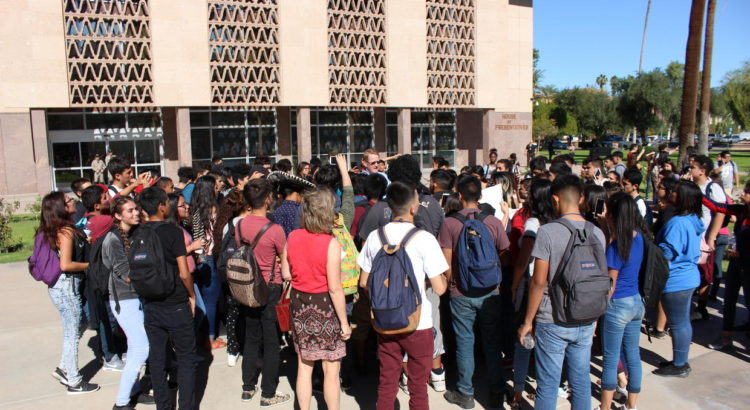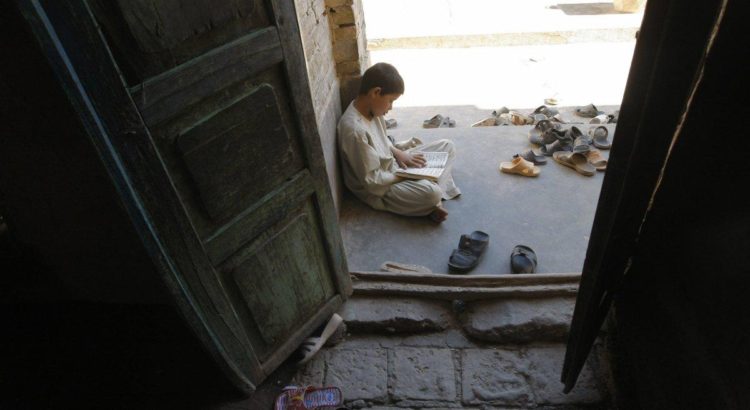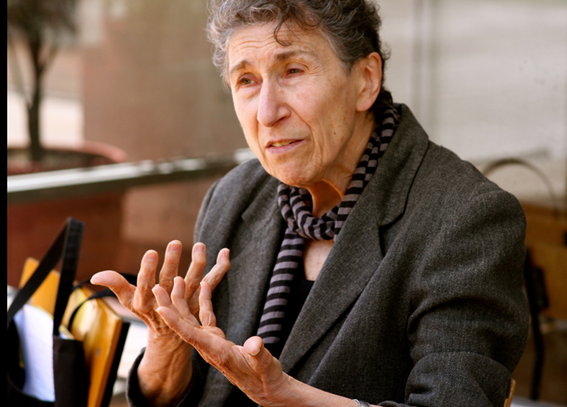El análisis feminista de la etapa de la transición del feudalismo al capitalismo y del trabajo reproductivo no asalariado como sostén del sistema capitalista han convertido a Silvia Federici, escritora, activista y profesora de la Universidad de Hofstra de Nueva York, en un referente para comprender la interconexión entre la crisis sistémica del capital y el incremento de las diferentes formas de violencias hacia las mujeres. Su paso por Ecuador para participar en diferentes encuentros con la academia y movimientos feministas durante el pasado mes de mayo, permitió una conversación en la que de manera crítica analiza la actualización directa e indirecta de la caza de brujas y las consecuencias de las políticas extractivistas sobre las vidas y los cuerpos de las mujeres en América Latina.La crisis del sistema ha tenido un grave impacto para las mujeres en diversos aspectos, pero también de manera diferenciada según territorios. ¿Cuáles son las consecuencias que se pueden identificar a nivel global tanto en el ámbito del trabajo como en el reproductivo?
La crisis capitalista ha significado cosas muy diferentes para las mujeres, según los lugares del mundo, pero igualmente existen elementos comunes. Las mujeres hoy se enfrentan de una forma muy diferente, pero contundente, con una crisis muy fuerte de la reproducción a todos los niveles como consecuencia del fracaso del estado de bienestar, el fracaso del salario masculino, el de la política del pleno empleo, que ha obligado a muchas mujeres a salir de la casa, tomar un segundo trabajo que se ha añadido al trabajo doméstico no pagado, así que ahora la jornada laboral de las mujeres es una jornada sin fin. Las mujeres hoy deben trabajar fuera y dentro de la casa para recuperar todos los cortes de los servicios sociales que el estado ya no realiza. En Estados Unidos, las mujeres se encuentran en una crisis existencial, personal y colectiva, muy fuerte, y se han convertido en las mayores consumidoras de antidepresivos. El número de suicidios de mujeres se ha elevado y se calcula que la esperanza de vida de una mujer proletaria sin recursos es cinco años menor que la de su madre. A nivel más internacional, las mujeres de las áreas rurales de América Latina y de África se encuentran con un ataque muy grave al territorio, lo que implica un impacto específico hacia ellas. Se trata de una agresión a las formas de cultivo de subsistencia, que para muchas mujeres son una manera de tener autonomía del mercado y sustentar a su familia en un contexto social donde la comunidades han sido desmonetarizadas como consecuencia del ajuste estructural, con el desempleo, y muchas veces con el despojo de la tierra que poseían.
Y en este contexto, también se da un ataque hacia el cuerpo de las mujeres y su autonomía…
Sí, también existe un nuevo ataque directamente contra el cuerpo de la mujer, contra su capacidad reproductiva, contra su capacidad de controlar la procreación, un ataque que es diferente según los lugares. En otros casos, las mujeres se enfrentan, por ejemplo, a la esterilización. Durante los años noventa hubo una campaña de esterilización brutal es muchas partes de África, de India, de Indonesia. En estos países se realizan los safaris de la esterilización, donde se juntaban mujeres dándole a cambio pequeñas cosas, como arroz, para convencerlas de que debían ligar o cortar las trompas. Había miedo a que estas mujeres fueran a procrear una generación de jóvenes más combativa. Yo creo que estos programas de esterilización están conectados como una respuesta a las luchas de las nuevas generaciones de los territorios colonizados, generaciones que se proponían, como proyecto político, recuperar la riqueza robada.
En otros lugares, se prohíbe el aborto, como en Ecuador, que no solamente significa prohibir a la mujer el control sobre su cuerpo, es parte de toda una política para controlar el trabajo de las mujeres, para poner una vez más su sumisión a los hombres de la casa y a su sexualidad, y su capacidad reproductiva al control de los hombres y del estado. Esto es un proceso que se puede documentar a nivel internacional. En Estados Unidos, muchos estados han aprobado leyes que intentan controlar la vida y el comportamiento de las mujeres cuando están embarazadas. Se establecen penalizaciones por comportamientos que no son aceptados, así, en muchos hospitales donde van las mujeres que no tienen recursos, se realiza un test de sangre después del parto, y en caso de identificar alguna anormalidad, se les envían a prisión acusadas de sabotear la vida del futuro nacido. Mujeres embarazas que han sufrido accidentes de coche han sido arrestadas por irresponsables.
Se trata de un nuevo ataque como el que se produjo en el periodo de la acumulación originaria, y que pasa por el trabajo, por el acceso de las mujeres a la tierra y a su cuerpo. Es una súper explotación. Ahora las mujeres deben trabajar fuera del hogar, dentro del hogar y trabajar también en industrias que son formas de esclavización, como la maquila, las mujeres han sido la carne de cañón de la desestructuración industrial del mundo con la maquilización del trabajo. Las mujeres jóvenes han sido destinadas a consumir su cuerpo, consumir su vida, en estas nuevas plantaciones industriales, donde se dan formas de trabajo verdaderamente esclavizantes.
Las mujeres son expulsadas de la tierra, marginalizadas, se penaliza el cultivo de subsistencia y el cuerpo también. Por eso, muchas mujeres en América Latina hablan de cuerpo y territorio, por la continuidad que hay en él.
¿Cómo relaciona la crisis del sistema y la explotación de los territorios con la violencia hacia las mujeres y la caza de brujas?
Una imagen muy fuerte de lo que está ocurriendo a nivel internacional es el gran aumento de la violencia contra las mujeres, un incremento del número de atentados y de abusos de forma cuantitativa, pero también cualitativa, por la intensidad de la brutalidad: hoy las mujeres se matan, se desmiembran, se queman vivas, se entierran… En esta caza de brujas de África, las entierran vivas, las desmiembran con machetes. Y son formas de violencia que también se documentan en países como España y e Italia. Este fenómeno tiene muchas caras: la violencia que se usa para aterrorizar poblaciones, para vaciar territorios que son destinados a la comercialización, destinados a la empresa minera, es otro tipo de violencia, es la violencia de la que habla Rita Segato, y que tiene como finalidad dar un mensaje a la población sobre la falta de compasión y de consideración, de manera que se les obliga a abandonar el territorio. Se destruyen a las mujeres para destruir a la comunidad, para obligarlas a salir. Esta es una violencia conectada al trabajo, como el asesinato de mujeres en Ciudad Juárez, muchas de ellas trabajadoras de la maquila, que ha servido para paralizar su forma de organización, es un fenómeno también de la frontera y a estas formas de súper explotación, que al principio habían provocado protestas de las trabajadoras de la maquila, que se habían sofocado, paralizado, contra esta gran violencia. Y también está la violencia de los narcotraficantes, de paramilitares… Está la violencia de los hombres, de la familia, porque los hombres descargan sobre las mujeres las frustraciones que llegan de su pérdida de poder social, y hombres que intentan recuperar a través del cuerpo de las mujeres lo que han perdido perdiendo el salario. Yo decía que en el periodo de acumulación originaria el capitalismo dio las mujeres a los hombres como compensación por la tierra que habían perdido. Hoy, el cuerpo de las mujeres es sustituto del salario y el empleo que han perdido. Hay hombres que venden a su pareja para el trabajo sexual, que es otro tipo de violencia, pero todas ellas están conectadas porque tienen sus raíces en la desestructuración del trabajo impulsado por el neoliberalismo, por la relación capitalista. Me interesa subrayar también la interacción entre violencia familiar, más no privada, porque es tolerada y mandatada por el estado, y la violencia pública e institucional. Y me interesa subrayar también la continuidad entre la violencia física del desmembramiento, de la quemadura, y de la política social, porque el empobrecimiento, la expropiación, el corte de los servicios sociales, deben ser considerados formas de violencia. Es importante no reducir la violencia a solamente la violencia directamente física, que es una medida central para imponer todo esto, pero que es parte integrante de otras violencias, que es integrada, configurada, en toda la organización capitalista del trabajo y de las relaciones sociales.
En diferentes países de África y Asia se han documentado asesinatos y torturas hacia mujeres acusadas de ser brujas. ¿Cómo se presenta en esta época la caza de brujas y con qué objetivos se ha producido esta actualización?
La caza de brujas que se conoce ahora empieza a actualizarse en los años ochenta, mano a mano con los programas de ajuste estructural y las políticas extractivistas que actúan de manera conjunta con el apoyo e intervención masiva en muchas partes del mundo, con un ejército de misioneros pentecostales financiados por las matrices más conservadoras de los partidos de derecha de los Estados Unidos, coincidiendo con la desestructuralización de la economía del tercer mundo, pero también de los países del primer mundo.
Estos misioneros llegaron pretendiendo hacer milagros, con propaganda e introduciendo la presencia de un diablo que conspira y que se esconde detrás de todos los males. Estos grupos tienen estrictos manuales de cómo reconocer a una bruja. En la televisión se difunden programas que enseñan a identificarlas, mientras que en los mercados populares también hablan de la brujería. Esto ha sido muy importante porque hay un conjunto de fenómenos de empobrecimiento, de migración, de desfragmentación y desmantelamiento del tejido social, como consecuencia de la intervención extranjera, principalmente de compañías mineras y petroleras que en muchos lugares conspiran con los jefes locales y con la organización pentecostal. Mujeres que viven solas, que se sustentan cultivando un trozo de tierra, empiezan a ser acusadas de brujas y de ser responsables de todo lo malo que ocurre en la comunidad, como la muerte de un niño, de un animal o de un accidente de coche. Ahora, familiares de mujeres que tienen tierra, sobre todo jóvenes que quieren apropiarse de esa tierra, se convierten en mercenarios de esos otros personajes.
En muchos lugares, la ausencia de asistencia médica ha sido sustituida por la figura del curandero. El curandero moderno es una figura que se presenta como alguien capaz de reconocer a las brujas. A veces, los jefes locales traen curanderos, o a personajes que se dicen capaces de reconocer a las brujas, mujeres que terminan siendo golpeadas, torturadas, despojadas de sus propiedades, y asesinadas. En Tanzania, en 2014, casi mil mujeres han sido asesinadas o brutalmente abusadas, acusadas de ser brujas, y es algo que también ocurre en otras partes de África, y en otras zonas como India. En África, hay hombres ancianos acusados de ser brujos, con el claro objetivo de confiscar su pensión. Los jóvenes acusaban a personas mayores de ser brujos, en el momento justo en el que estas personas regresaban de la ciudad con dinero, con el objetivo de confiscar su ganancia. Vemos de esta manera la conexión y complicidad entre estos fenómenos y las políticas de despojo, la relación entre el contexto del despojo, del empobrecimiento y de la fragmentación de la solidaridad social. Y a esto se añade una comunalidad de intereses entre los grandes actores, los gobiernos, con los planes de desarrollo, con su complicidad con las compañías mineras, petroleras, que están interesadas en desplazar aldeas y comunidades enteras, o a realizar formas muy contaminantes de extracción. Y, en esta situación, una juventud sobre todo masculina local que no tiene futuro, que no ve capacidad de algún empleo o estudio, y que no sabe cómo salir del empobrecimiento, es fácilmente reclutada por los jefes locales y por la compañía minera para formar parte de su ejército privado. Es decir, terminan siendo utilizados para enfrentarse a las comunidades, sobre todo a las mujeres. Esperando apropiarse de un trozo de tierra y de los pocos recursos que puede haber, son los que acusan directamente a las mujeres de ser brujas.
En África y en India se produce una caza de brujas bajo acusación directa, pero en otras regiones del mundo, como América Latina, ha identificado una criminalización de las prácticas y saberes tradicionales.
Las diferentes versiones de la caza de bruja están conectadas. Está la caza de brujas que pasa por la acusación directa en la que te dicen: “tú eres bruja”; pero también existe una caza indirecta en la que se lleva a cabo la criminalización de las prácticas y saberes que no gustan al estado porque dan autonomía a las mujeres y no puede ejercer su control. Junto a la criminalización de estos espacios de autonomía se da un conflicto intergeneracional, que es un conflicto de valores. Los jóvenes, también las mujeres, vinculan la felicidad con el desarrollo del consumo, en el marco del sistema capitalista monetario, y ven con desprecio y con rechazo a sus mayores, sobre todo a las mujeres, porque tienen valores que consideran atrasados, como amar a la naturaleza y negarse a vender la tierra.
En mi investigación, he encontrado testimonios de hombres mayores que afirman tener miedo de que un hijo los mate para vender su tierra y con el dinero comprar un taxi. Literalmente, es el pensamiento del Banco Mundial, que ha adoptado la teoría del economista peruano Hernando de Soto, quien afirma que la tierra no es verdaderamente fértil y que, si hoy hay pobreza en el mundo, se debe a que millones de personas usan la tierra para sustentarse. Según este pensamiento, la tierra es fértil solo cuando se usa de manera colateral, cuando se intercambia con el banco por un préstamo monetario con el que se va a impulsar un negocio. Y este es el pensamiento de los jóvenes, ven que el futuro está en el dinero, no está en los árboles, ni en la tierra, ni en los animales.
Este desprecio y desvalorización es parte de un proceso histórico de desvalorización de las mujeres, de la tierra, del proceso de reproducción y de desvalorización de la vida, cuando la vida solo sirve como medida de la ganancia individual por la acumulación de la riqueza individual.
Las políticas extractivistas y la explotación de los territorios se justifican en algunos países de América Latina como un “mal necesario” que permite obtener financiamiento dirigido al desarrollo social. ¿Qué han supuesto estas políticas de manera específica para las mujeres?
Es mentira que estas acciones extractivistas sobre el territorio permitan un desarrollo social, y es una visión que he elaborado a partir de muchos encuentros con mujeres en América Latina sobre lo que está sucediendo. En algunos países se ofrecen a cambio del despojo bolsas familiares, que no pueden compensar de ninguna manera la gran catástrofe, el desplazamiento y la contaminación de la tierra en la vida de los pueblos, en general, y de las mujeres, en particular. La contaminación de la tierra, implica la pérdida de la vida, la cultura y los saberes, no se deja nada a las siguientes generaciones, de manera que es un ataque a la vida misma. Esas pequeñas bolsas familiares que se dan en algunos países nunca fueron pensadas para el bienestar de las mujeres, si no para dar la impresión de que se ofrecía algo a cambio y, sobre todo, para desmovilizar la protesta que surgía del despojo. Se pretende eliminar la forma más horrenda de empobrecimiento, pero estas bolsas familiares nunca fueron dirigidas a cambiar el modo de producción, a crear una sociedad más justa. Y me parece, hablando con muchas mujeres de Bolivia, pero también de Sudáfrica, que las políticas de las bolsas familiares es un estándar de estos gobiernos que se dicen progresistas. Además, los requisitos exigidos para recibir las bolsas son complicados y aquellas mujeres de zonas rurales que no están familiarizadas con las instituciones pierden estas bolsas que no cambian las condiciones de vida ni tampoco el sistema de producción. Más bien, piensan que es una forma de control gubernamental por integrarlas en la economía monetaria y controlar a unas mujeres que estaban fuera del sistema. Además, con la caída de los ingresos como consecuencia de la bajada del precio del petróleo, es probable que esta medida vaya a desaparecer.
Precisamente, usted observa una relación entre la expropiación de la tierra y la nueva organización de la producción industrial, con la maquila como único medio de subsistencia para las mujeres que han sufrido el despojo.
La desestructuración de la producción industrial a nivel global fue la respuesta a la enorme lucha de las décadas de los años sesenta y setenta contra la gran concentración industrial. El desmantelamiento de empresas, como Fiat, ha dejado ciudades fantasmas, como Detroit, que ha perdido más de la mitad de su población, después de que se convirtiera en un centro de lucha obrera. Es muy interesante ver cómo desde finales de la década de los años ochenta se ha reconstruido la organización del trabajo a nivel mundial, han cerrado y desmantelado la gran concentración industrial y la reorganizaron la producción industrial a nivel internacional con la maquila, que es alimentada por la expropiación de la tierra. En América Latina, la expropiación de la tierra es la raíz de la maquila, ya que las mujeres jóvenes no pueden sustentarse con una actividad del campo que dejó de existir, y ante la falta de oportunidades se ven obligadas a trabajar en la maquila. Son trabajadoras cuyos padres perdieron la tierra o se han endeudado con la política de Monsanto para comprar las semillas. El despojo de la tierra, el endeudamiento de los campesinos, que ha provocado tantos suicidios, ha sido la base y el fundamento sobre el cual se ha construido la maquila, que ha sido el reemplazo de las grandes concentraciones industriales. La maquila es una institución militar, no solamente económica, y en ella se puede poner cualquier condición de trabajo: no se permite la organización ni la sindicalización, no existen horarios ni protección de los derechos. La maquila es un ataque contra la salud de las mujeres y un ataque contra los derechos humanos en general. Hay que recordar cuántas mujeres han muerto por no poder salir de un incendio, a causa del cierre de puertas de la fábrica, es algo que recuerda a la fase del periodo de acumulación originaria. En Foxconn, la empresa que fabrica los productos para Apple, trabajan sesenta mil mujeres con unas condiciones de trabajo tan brutales, que han adoptado el suicidio desde los techos de la fábrica como estrategia de lucha, y ahora hasta les hacen firmar un compromiso de que no van a suicidarse en el trabajo.
Fuente: http://www.rebelion.org/noticia.php?id=218923&titular=%93la-muerte-de-mujeres-en-las-maquilas-recuerda-a-la-fase-del-periodo-de-acumulaci%F3n-














 Users Today : 1
Users Today : 1 Total Users : 35460780
Total Users : 35460780 Views Today : 1
Views Today : 1 Total views : 3419988
Total views : 3419988